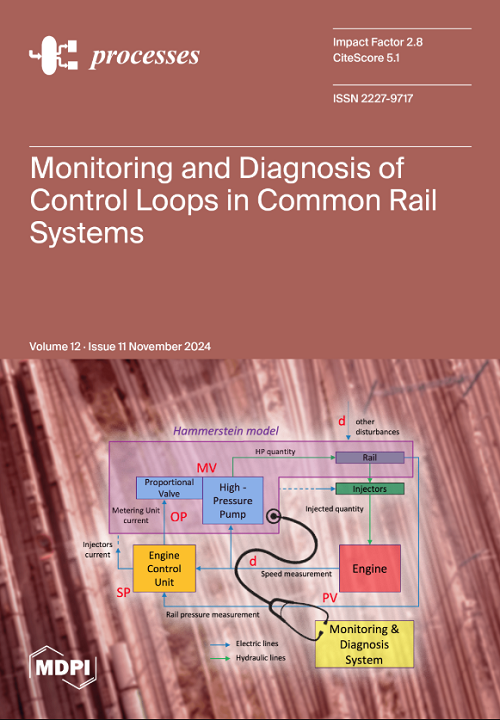Seismic Response of Cable-Stayed Spanning Pipeline Considering Medium-Pipeline Fluid–Solid Coupling Dynamic Effect
IF 2.8
4区 工程技术
Q2 ENGINEERING, CHEMICAL
引用次数: 6
Abstract
With the aim of determining the influence of the fluid–structure coupling dynamic effect of the oil and gas transmission medium and pipeline on the seismic response, an oil pipeline supported by a cable-stayed spanning structure was taken as the study object. Kinetic equations taking into account the action of oil and gas medium were studied, and a finite element model structure considering the additional-mass method and the fluid–structure coupling effect were established separately. In addition, the mechanism of the oil–gas–pipeline coupling action on the seismic response of pipeline structure was analyzed, and the results were obtained. The results show that the pipeline has a minimal seismic response at the abutment location, the seismic response gradually increases along the abutment to the main tower, and the seismic response reach is maximized at about one-fifth of the bridge platform. The seismic response of the oil and gas pipeline model structure using the additional-mass method is generally more significant than that based on the fluid–solid coupled dynamic model; moreover, the maximum displacement response differs by about 24%, and the maximum acceleration response differs by approximately 30%, indicating that the oil and gas medium has a certain viscoelastic damping effect on the seismic response of the oil pipeline, which provides a reference for the seismic response calculation theory and analysis method of cable-stayed spanning oil pipelines.考虑介质-管道流固耦合动力效应的斜拉跨越管道地震反应
为了确定油气输送介质和管道的流固耦合动力效应对地震响应的影响,以斜拉跨越结构支撑的输油管道为研究对象。研究了考虑油气介质作用的动力学方程,分别建立了考虑附加质量法和流固耦合效应的有限元模型结构。此外,还分析了油气管道耦合作用对管道结构地震反应的机理,并得出了相应的结果。结果表明,管道在桥台位置的地震反应最小,地震反应沿桥台向主塔逐渐增加,地震反应范围在桥梁平台的五分之一左右最大。使用附加质量法的油气管道模型结构的地震响应通常比基于流固耦合动力学模型的地震响应更显著;此外,最大位移响应相差约24%,最大加速度响应相差约30%,表明油气介质对输油管道的地震响应具有一定的粘弹性阻尼作用,为斜拉跨输油管道的抗震计算理论和分析方法提供了参考。
本文章由计算机程序翻译,如有差异,请以英文原文为准。
求助全文
约1分钟内获得全文
求助全文
来源期刊

Processes
Chemical Engineering-Bioengineering
CiteScore
5.10
自引率
11.40%
发文量
2239
审稿时长
14.11 days
期刊介绍:
Processes (ISSN 2227-9717) provides an advanced forum for process related research in chemistry, biology and allied engineering fields. The journal publishes regular research papers, communications, letters, short notes and reviews. Our aim is to encourage researchers to publish their experimental, theoretical and computational results in as much detail as necessary. There is no restriction on paper length or number of figures and tables.
 求助内容:
求助内容: 应助结果提醒方式:
应助结果提醒方式:


